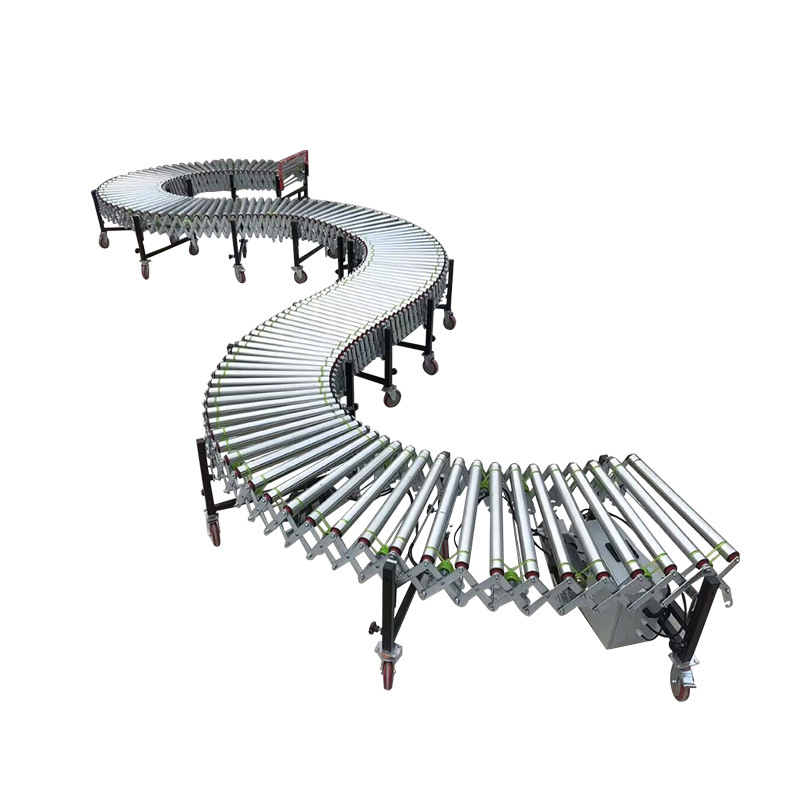Structural design of power roller telescopic line
1. Power roller: There are many types of power rollers, including electric rollers, sprocket rollers, belt rollers, etc. The electric roller integrates the motor and the reduction mechanism inside the roller, with a compact structure and good sealing, and is suitable for occasions with high space and hygiene requirements.
2. Roller material and surface treatment: Carbon steel rollers have high strength and low cost, and are suitable for general industrial environments. The surface of the roller is usually specially treated, such as galvanizing, rubber coating, etc., to increase friction and wear resistance to prevent the goods from slipping or being damaged during transportation.
3. Telescopic mechanism: The telescopic mechanism is the key part to achieve the change in the length of the conveyor line. The guide rail slider telescopic mechanism realizes the relative sliding of the segments through the cooperation of the guide rail and the slider, and has the characteristics of high precision and good stability.
4. Frame: The entire power roller telescopic line is installed on the frame, which is the basic support part of the equipment. The design of the frame should take into account the overall stability and load-bearing capacity of the equipment, and is usually welded with profiles such as channel steel and I-beam.
5. Support structure: In order to ensure the stability of the conveyor line under different lengths and loads, a variety of support structures are provided. At the bottom of the telescopic line, there are usually height-adjustable legs installed, which can be adjusted according to the flatness of the ground to keep the equipment level.


